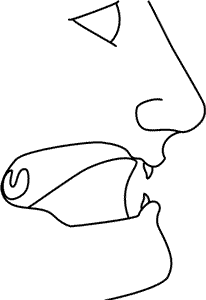How to Pronounce the Letter L

People may struggle to pronounce the letter 'l' for several reasons:
- Articulation Complexity: The 'l' sound, known as the lateral approximant, involves lifting the tongue to touch the alveolar ridge (the ridge just behind the upper front teeth) while allowing air to flow around the sides of the tongue. This specific tongue movement can be difficult to master.
- Language Differences: Different languages have different 'l' sounds, or they may not have the 'l' sound at all. For example, some Asian languages, like Japanese, have sounds that are acoustically similar to 'r' and 'l', making it hard for speakers to distinguish and produce the English 'l' correctly.
- Developmental Speech Patterns: Children learning to speak may not develop the 'l' sound until later in their speech development. It's common for young children to substitute 'l' with other sounds, such as 'w' (e.g., saying "yewo" instead of "yellow").
- Speech Disorders: Some individuals may have speech disorders or conditions such as tongue-tie (ankyloglossia), which restricts tongue movement and can affect the ability to produce certain sounds, including 'l'.
- Lack of Exposure and Practice: For non-native speakers, a lack of exposure to the 'l' sound and insufficient practice can make it difficult to pronounce correctly. Consistent practice and listening to native speakers can help improve pronunciation.
 Open your mouth slightly. Let the tip of your tongue touch the gum ridge.
Open your mouth slightly. Let the tip of your tongue touch the gum ridge.
 The tip of the tongue does not touch the back of the front teeth when pronouncing the letter L.
The tip of the tongue does not touch the back of the front teeth when pronouncing the letter L.
Tips for Improving 'L' Pronunciation:
- Listen and Imitate: Listen to native speakers and try to imitate the sound. Pay attention to how their tongue moves and where it is positioned.
- Practice Exercises: Use exercises that focus on tongue placement and movement. For example, repeatedly saying words that start with 'l', like "light" or "love", can help.
- Break It Down: Start by practicing the 'l' sound in isolation before moving on to words and sentences. Begin with words where 'l' is at the beginning and then practice words where 'l' is in the middle or end.
- Use Visual Cues: Look in a mirror while practicing to see the position of your tongue and mouth. This can help ensure you're positioning your tongue correctly.
- Seek Feedback: Record yourself and listen to the playback to identify areas for improvement. You can also ask a native speaker or a language teacher for feedback.
- Be Patient and Persistent: Improving pronunciation takes time and consistent practice. Be patient with yourself and keep practicing regularly.
With time and effort, pronouncing the 'l' sound will become more natural.
Now try it:-
Inside a word:-
bleary - clear - silent
At the end of a word:-
ale - real - sail
At the beginning of a word:-
lamp - let - loot
Now try these ultimate tongue twisters, and don't forget you have to keep repeating them:-
Lots of little London lamp-lighters lit London's little lamps.
Lick the red lolly Rick!
Red lorry, yellow lorry.
More tongue twisters here.

